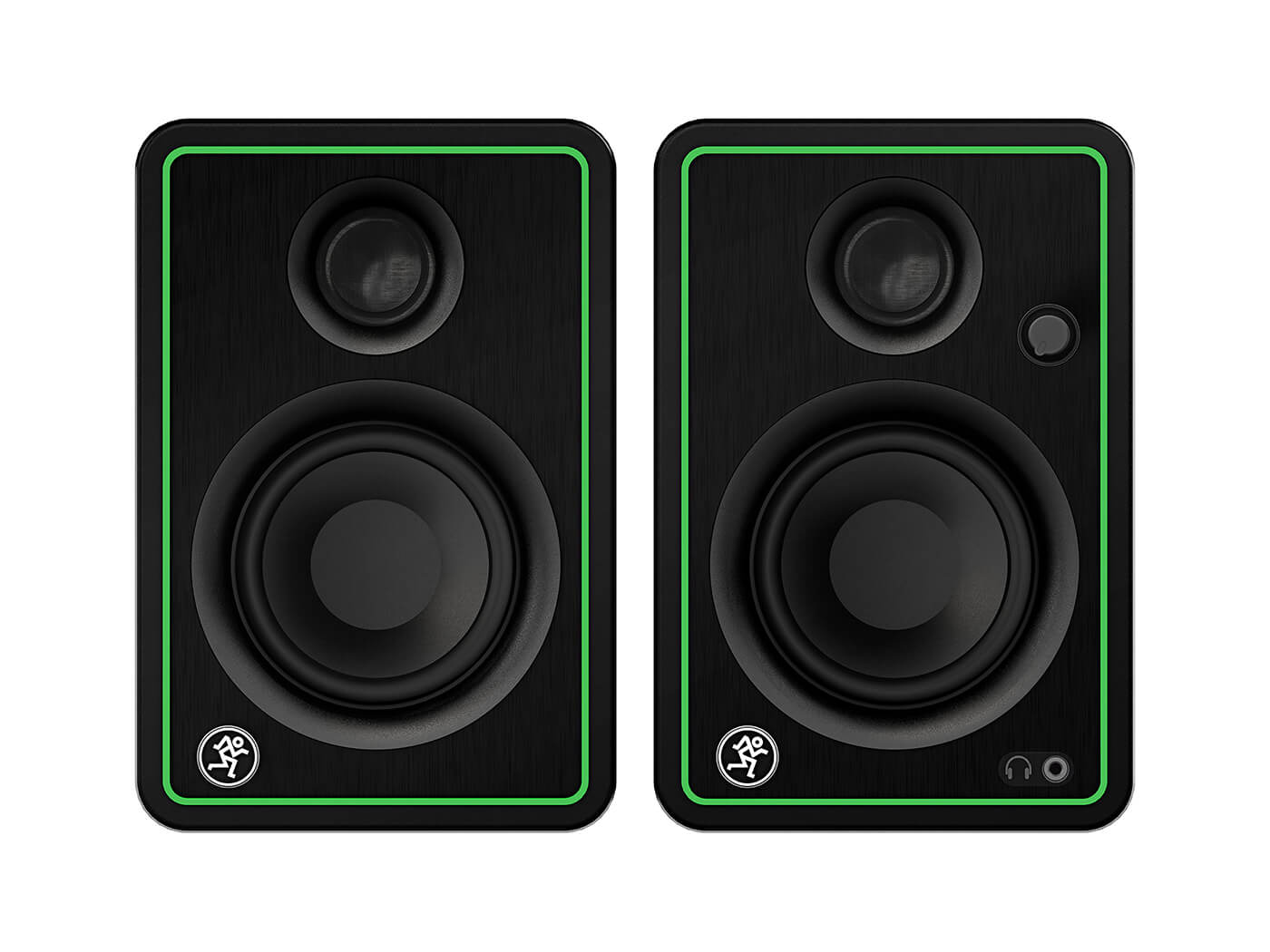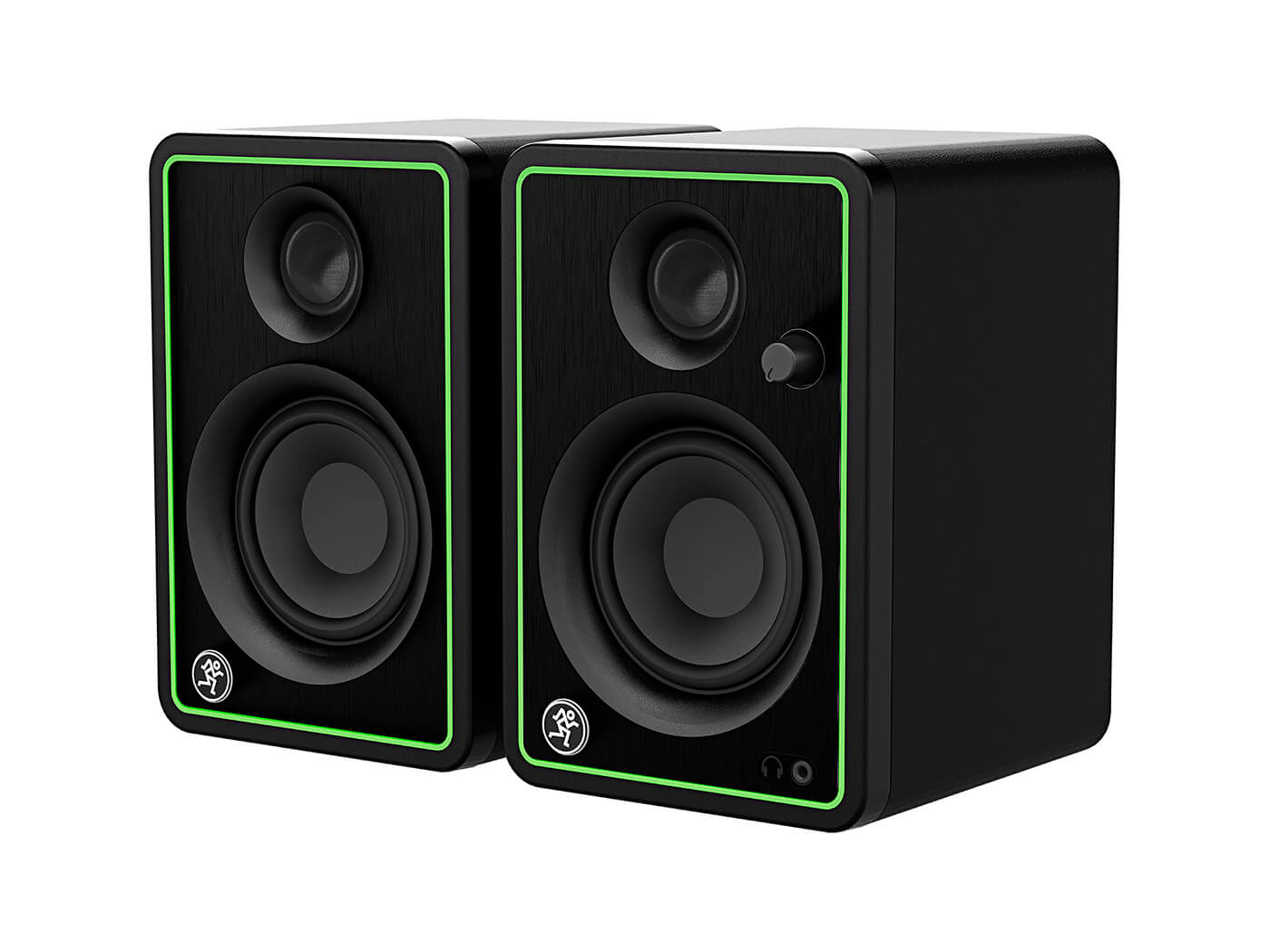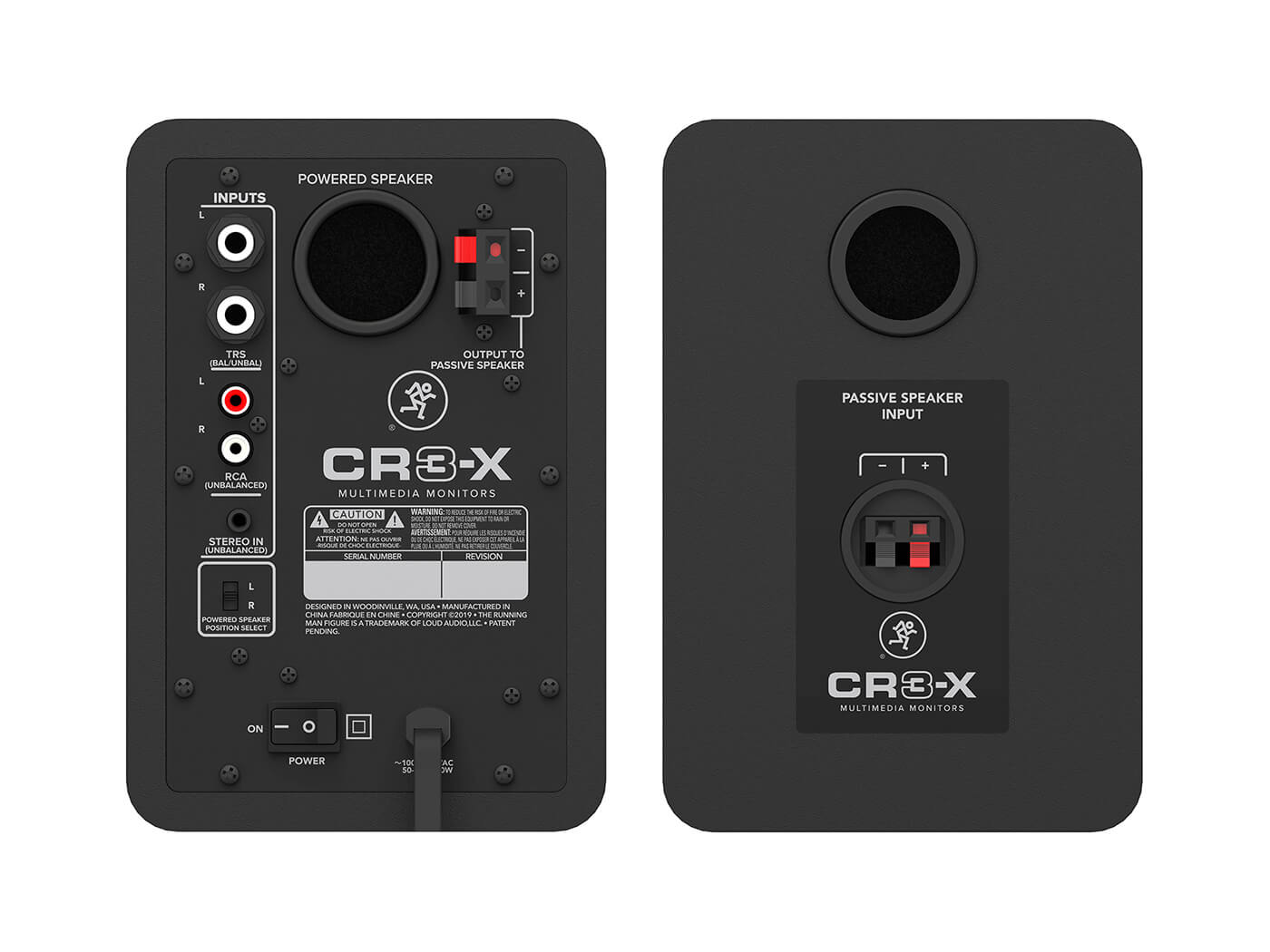Review: Mackie CR3-X
Can these affordable mini speakers serve the needs of both web content creators and home studio producers?

Review Overview
Our rating
9
Our verdict
⊕ Excellent value for money
⊕ Pro Tools software included
⊕ Good treble quality
⊕ Easy on the ear
⊖ Limited and coloured bass response
Unlikely to be found in professional studios, the CR3-X coupled with Pro Tools software is an excellent package, ideal for those beginning their sound production journey.

Price $99.99 / £89
Contact Mackie
We’ve recently had a run of large 8-inch driver-equipped monitors ranging in price from many hundreds to several thousands of pounds. Not everyone has space or the bank balance to accommodate equipment of this size, and those finding themselves extremely limited in either department will welcome the compact and bijou design of the CR3-X.
Mackie‘s latest CR-X series includes 8, 5 and 4-inch designs alongside the tiny 3-inch driver equipped mini-monitors on test here. Although the company is marketing the range as multimedia monitors, ideal for web content creators and home studio producers, the CR-X series’s music-making capabilities are reinforced by the inclusion of the Pro Tools First professional recording software and plug-in package. This Music Collection for Pro Tools First includes 23 plug-ins such as BBD delay, Eleven Lite, 304E EQ and 304C compressor. However, an in-depth look at this package is beyond the scope of this review. For budding music producers starting from scratch, though, the inclusion of Pro Tools First will make these inexpensive monitors an attractive proposition.
As for the CR3-X itself, situated above the 3-inch (76 mm) polypropylene woofer is a 0.75-inch (19 mm) ferrofluid-cooled silk-dome tweeter. One of the speakers contains the 50-watt power amplifier that drives both units, and a 200 cm (approx 6.5-foot) length of speaker cable is provided to link the pair. XLR connection is not available, but TRS (jack) and phono connection are catered for along with a simple stereo mini-jack input. Mackie provides a basic mini-jack to stereo phono lead to get you up and running immediately. A useful inclusion is a switch to alter the left/right aspect of the stereo image so you can choose where the master unit with the volume control is situated.

While the monitors are incredibly lightweight at only 3.5 kg – making them ideal for music-makers on the move – the cabinet is constructed from solid MDF with a brushed metal front panel. This gives the monitors a classy look that belies their modest price tag, but Mackie’s claim in their promotional blurb that ownership will make a statement like “I’m kind of a big deal” or “Hey, look at my cool speakers” is rather a stretch.
As a rear-ported design, the CR3-X is not particularly suitable for flush-to-rear-wall placement. However, as they don’t produce prodigious bass, near-to-wall placement with a 3 or 4-inch gap is fine and will provide a degree of low-end reinforcement too. Bass response is good for a monitor of this size, but they don’t deliver the kind of true low-end depth and detail necessary for making critical mix decisions in that area. Rather, the little woofer provides an approximation of low-end from which you can make balance adjustments in the mid-range and upper treble.
Recordings with serious low-end content will make the monitors distort if pushed beyond moderate listening levels. This can be useful for checking how mixes might come across on normal consumer audio equipment; most people don’t have club-sized PA systems at home, and many listen primarily through earbuds or in-car stereos.
It’s this type of smooth, user-friendly sound that the CR3-X mimics, rather than going for the warts-and-all sound of high-end monitoring systems. While this doesn’t make them ideal for fine-tuning mixes at the highest level, it’s a great way of hearing your tracks the same way your audience will. Back in the day, many studios augmented their main monitoring system with little desktop cube speakers called Auratones – “horror-tones” as they were not always affectionately known – which sounded like the brash, mid-forward transistor radios and cheap ‘music centres’ of the 1970s and 80s. With this in mind, the CR3-X needn’t become redundant once you’re able to accommodate more accurate monitors, as they provide a real-world presentation of music.
Listening to some recently completed final mixes along with work-in-progress and well-known commercial releases, the Mackies’ strengths and weaknesses reveal themselves in equal measure. A synth-pop track with some serious sub-bass upset the mid-bass unit, which produced cone-flapping distortion at anything above low-level listening. Even a vintage recording such as The Beatles’ Come Together provoked the swampy bass-line into bottom-end fart territory at moderate volume levels.
We know this 1969 analogue recording (brilliantly remixed in 2019) well, and the CR3-X revealed many fine details that less capable speakers gloss over. Sure, we already know exactly where those instances of guitar fret-squeak and off-mic vocalisations are, along with the depth of slap-back tape-echo on John Lennon’s lead vocal. However, the smooth yet clear treble response does not draw a veil over these details.

Set up on sturdy stands placed 4 feet apart and angled towards the listening position (4 feet from the monitors to form the optimal equilateral triangle), the CR3-X monitors present a wide and stable stereo image that’s incredibly good for their diminutive dimensions. The waveguide surrounding the tweeter ensures a decent off-axis response, so the soundstage doesn’t collapse when you move from the central sweet spot. This is beneficial when collaborating because both you and your production partner get a good idea of what’s going on in the stereo mix. Similarly, moving up and down the vertical plane reveals the monitors’ excellent phase coherence, something smaller speakers often achieve better than huge 3-way designs.
While monitors of this size are no substitute for larger or more accurate designs when fine-tuning mixes at the highest level, they do produce a sound that’s good enough to create a decent balance from multi-tracked recordings, and they’re likely to fulfil all the monitoring requirements of your average ‘content creator’. And unlike the ultra-accurate, brutally honest designs costing many times the price of these easily affordable monitors, the Mackies are great for relaxing in front of with your favourite tunes.
Although the CR3-X monitoring system isn’t feature-packed with EQ controls and room placement filters like many modern monitors, the inclusion of Pro Tools First software more than compensates, making them an extremely attractive proposition for budding bedroom producers starting from scratch.
Key Features
- 3″ mid-bass driver, .75″ tweeter
- 50W amplifier
- All-wood cabinet
- Custom-tuned ports and waveguide
- Front-facing headphone jack
- 1/4″ TRS, 1/8″ and RCA inputs
- Includes Pro Tools First and The Musician Collection of plug-ins
- Dimensions: 5.5 x 8.1 x 7.1″ / 14 x 20.6 x 18 cm
- Weight: 7.8 lbs / 3.5 kg (pair)